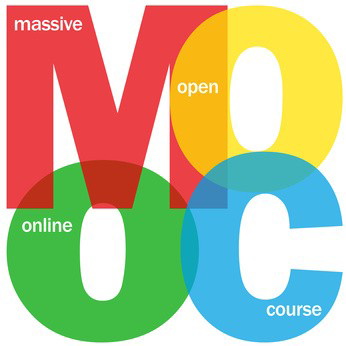What are MOOC’s?
MOOC stands for Massive Online Open Courses. They are aimed at unlimited participation and open access via the web. Introduced in 2008 by Canadian academics, they have already changed the way knowledge is distributed and learning takes place. Although they pay close resemblance to traditional lectures, offered by universities around the globe, they have one major benefit: most of them are offered for free or at a rate that is just a fraction of what universities charge their students. How can this be?
The pricing structure of MOOC’s
In order to understand how these courses can be offered at such a low price, we need to understand more about the type of good and how they are priced. MOOC’s are so called ‘information goods’, a type commodity whose main market value is derived from the information it contains. According to Shapiro (1998), the pricing of information goods has several characteristics. In contrast to regular goods, the cost of information goods is not constant for every product. Even before the first copy of the good is produced, the majority of the costs have already been made, these are called sunk costs. For MOOC’s these costs consists of the salary of the lecturer, the cost of the course material, the costs of the website and platform and the cost of recording the lectures. After these costs have been made, the costs of producing a second copy, the so called variable costs, are very low. Allowing an additional student access to the information only consists of the additional server capacity needed. This is summarized by Shapiro (1998) as: “Information is costly to produce, but cheap to reproduce.”
The pricing structure of University Courses
If we compare the cost structure of MOOC’s with courses of regular universities, we can understand why MOOC’s are relatively cheap. Regular courses are not only information goods, additionally many services are offered to the students. Therefore, the principles of information goods pricing do not apply to them. The fixed costs of universities are somewhat similar to MOOC’s, however the variable costs of an additional student are relatively high. This is because the lecture halls and study facilities need to be bigger to accommodate for an increased amount of students. Also, extra personnel should be hired, since the students require personal attention. Since the variable costs are so high, students pay very high fees to participate in regular classes.
To answer the question in the title: No, regular universities are not a rip-off. They really do cost a lot. Due to the pricing principles of information goods, MOOC’s can be offered at a much lower price to a lot more students at once.
Sources:
Information good – Wikipedia. (n.d.). Retrieved October 23, 2016, from https://en.wikipedia.org/wiki/Information_good
Shapiro, C., and Varian, H. 1998. Pricing Information. In Information Rules: A Strategic Guide to the Network Economy. Cambridge, MA: Harvard Business School Press.


Hi Jasper, interesting post. I agree with the fact that regular university courses are not a rip-off due to the costs. I think it is really important to also considers the value side here. When I would take very similar courses to my current program via MOOCs (if those courses are rated very well and provided by top universities) the value would not be much different. This while the costs would be significantly lower. The more people use MOOCs, the more they are rated on quality, and the higher the transparency of the value of MOOCs to the public and employers. I think a major shift to MOOCs instead of studying in a university setting is inevitable.